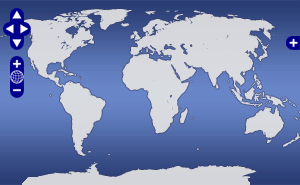Heat flow data from the Hikurangi subduction zone, 2019 (RR1901, RR1902)
This heat flow data set was acquired during R/V Roger Revelle cruises RR1901 and RR1902 conducted in 2019 as part of the project called SAFFRONZ: Slow-Slip and Fluid Flow Response Offshore New Zealand - Probing the Nature of the Hikurangi Margin Hydrogeochemical System. Fluid generation, migration, and pore pressure at subduction zones are hypothesized to exert a primary control on the generation of seismicity, low-frequency earthquakes and slow slip events (SSEs). The Hikurangi margin (east coast of North Island, New Zealand) exhibits dramatic changes in the along-strike depth distribution of SSEs, depth of interseismic coupling, inferred pore pressure, and other subduction-related parameters. In 2019, in-situ measurements of thermal gradient and thermal conductivity were collected using the Oregon State University 3.5-m violin-style multi-penetration heat flow probe. In most cases seeps were targeted to document advective heat flow, if any. The thermistor string houses 11 thermistors and measures both the in-situ thermal gradient and thermal conductivity that are combined to determine the heat flow. On most measurements the probe position was determined with ultra-short baseline telemetry (USBL). The data was processed using SlugHeat (https://marine-heatflow.ceoas.oregonstate.edu/software/). The data file is in Excel spreadsheet format, with column headers. Funding was provided by NSF grants OCE17-53665 and OCE17-53617.
Harris, Robert
Investigator
COAS
Torres, Marta
Investigator
COAS
Solomon, Evan
Investigator
UW
Device Info
Probe:
Platform
Roger Revelle
SIO
Awards
Data DOI
Quality
2
The data have been processed/modified to a level beyond that of basic quality control (e.g. final processed sonar data, photo-mosaics).
License
Data Files
References
Data Citation Information
ISO/XML Metadata
Expand

 Map View
Map View
